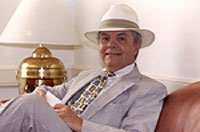 Ninety years ago this week, the world felt a sense of relief and euphoria as World War I came to an end with the signing of the Armistice. In the year and a half since the U.S. had entered the War, WRA students were required to attend military drill every morning on the campus in the area where the John D. Ong Library stands today. Mathematics master James S. Levering was the drill master. No weapons were available, but students wore khaki uniforms. On the day of the Armistice Headmaster Homer O. Sluss invited the community to a service of thanksgiving held at the WRA Chapel.
Ninety years ago this week, the world felt a sense of relief and euphoria as World War I came to an end with the signing of the Armistice. In the year and a half since the U.S. had entered the War, WRA students were required to attend military drill every morning on the campus in the area where the John D. Ong Library stands today. Mathematics master James S. Levering was the drill master. No weapons were available, but students wore khaki uniforms. On the day of the Armistice Headmaster Homer O. Sluss invited the community to a service of thanksgiving held at the WRA Chapel. 
Several WRA students had dropped out in order to enlist, and other alumni also enlisted in the war effort. Thomas L. Robinson of the class of 1896 was nearly 40 when he was commisioned a Major in the Army with service as a Red Cross commissioner in France. He went with the Occupation forces into Germany in 1919 and later was decorated by both Italy and Belgium for outstanding war service.
Well into the 1930's WRA observed Armistice Day with a special Chapel service that usually featured a veteran of the "Great War". In 1930 WRA English master Melvin H. Black, who was at the front on the day the armistice was  declared, told how "the Germans and Allies mingled and shared their scanty provisions after 11:00 on that memorable day". Black, who reported that he actually enjoyed his service with the AEF, said that he learned how to cook as the result of being a mess sergeant in the army. Another faculty member who had vivid memories of the War was chemistry master Russell H. Cleminshaw, who taught at WRA from 1934 to 1960. He was a 1st Lieutenant of Field Artillery and served in the Meuse-Argonne campaign, and later was with the Army of Occupation at Coblenz,
declared, told how "the Germans and Allies mingled and shared their scanty provisions after 11:00 on that memorable day". Black, who reported that he actually enjoyed his service with the AEF, said that he learned how to cook as the result of being a mess sergeant in the army. Another faculty member who had vivid memories of the War was chemistry master Russell H. Cleminshaw, who taught at WRA from 1934 to 1960. He was a 1st Lieutenant of Field Artillery and served in the Meuse-Argonne campaign, and later was with the Army of Occupation at Coblenz,  Germany. His officer training courses included topography, map making, and the care and training of horses in the field. World War I was the last conflict where horses still played a crucial role with the cavalry. Once the "war to end all wars" was over, military training on campus disappeared, but the memory of the Armistice was solemnly observed every year until the outbreak of World War II.
Germany. His officer training courses included topography, map making, and the care and training of horses in the field. World War I was the last conflict where horses still played a crucial role with the cavalry. Once the "war to end all wars" was over, military training on campus disappeared, but the memory of the Armistice was solemnly observed every year until the outbreak of World War II.
 declared, told how "the Germans and Allies mingled and shared their scanty provisions after 11:00 on that memorable day". Black, who reported that he actually enjoyed his service with the AEF, said that he learned how to cook as the result of being a mess sergeant in the army. Another faculty member who had vivid memories of the War was chemistry master Russell H. Cleminshaw, who taught at WRA from 1934 to 1960. He was a 1st Lieutenant of Field Artillery and served in the Meuse-Argonne campaign, and later was with the Army of Occupation at Coblenz,
declared, told how "the Germans and Allies mingled and shared their scanty provisions after 11:00 on that memorable day". Black, who reported that he actually enjoyed his service with the AEF, said that he learned how to cook as the result of being a mess sergeant in the army. Another faculty member who had vivid memories of the War was chemistry master Russell H. Cleminshaw, who taught at WRA from 1934 to 1960. He was a 1st Lieutenant of Field Artillery and served in the Meuse-Argonne campaign, and later was with the Army of Occupation at Coblenz,  Germany. His officer training courses included topography, map making, and the care and training of horses in the field. World War I was the last conflict where horses still played a crucial role with the cavalry. Once the "war to end all wars" was over, military training on campus disappeared, but the memory of the Armistice was solemnly observed every year until the outbreak of World War II.
Germany. His officer training courses included topography, map making, and the care and training of horses in the field. World War I was the last conflict where horses still played a crucial role with the cavalry. Once the "war to end all wars" was over, military training on campus disappeared, but the memory of the Armistice was solemnly observed every year until the outbreak of World War II. 
